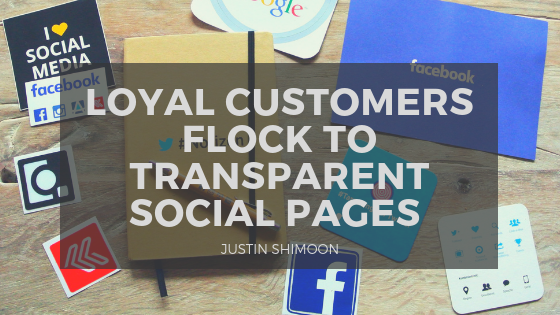About Justin
Justin Shimoon is the founder and CEO of AffinityClick Inc., the makers of Hushed, a top-five grossing iOS/Android app for over five years.
Justin’s love for technology and marketing started at an early age and followed him through his years at university. After graduating from Carleton University with a degree in electrical engineering, as well as a minor in telecommunications, Justin didn’t waste any time before jumping into the internet marketing industry. In 2000, he founded his first company, Sitebrand, a digital marketing company. Sitebrand helped companies personalize the online experience with relevant messaging. Behind Sitebrand was a team of seasoned personalization experts. At the time, Justin didn’t know it, but this company would help him develop as a leader and CEO, which would become invaluable later in life as he started additional companies.
During this tenure as CEO at Sitebrand, Justin developed his leadership style, fostered the development of close to 40 employees at the company’s peak, and became an expert on digital marketing and the ever-evolving industry. As Sitebrand quickly grew and established a major presence, Justin evolved into a prominent business leader in Ontario, Canada. Tasked with growing a team and developing a positive work culture at an early age, Justin embraced the challenge head on and ever since, he has been intentional about professional development and challenging himself to become a better leader each day.
Today, Justin uses the experiences and lessons learned from his first startup companies to shape his decision making skills at Hushed. Considered a leader in the VOIP telecommunication space, Justin and the team at Hushed have built a successful company with over seven million downloads, 500 million phone calls, 1 billion million text messages, and utilized in over 45 countries. Despite the large-scale adoption by Hushed users, Justin is most proud of the 4.5 star rating on the Apple App Store, with over 1,000 reviews.
Justin is quick to share that it was the culmination of hard work and the ability to predict which features users would want that allowed Hushed to grow to the level it has. For Justin and the team at Hushed, the excited lies in knowing they have only just scratched the surface. While Justin remains engaged in the VOIP industry and working to make Hushed the worldwide leader, he is also passionate about the technology startup scene in Canada. Justin enjoys learning about emerging technology like artificial intelligence and cryptocurrency. His curiosity and drive to always learn is infectious to those around him
Justin has started this website to serve as an outlet to share his thoughts around leadership, marketing, and how startup founders can create a product and culture scales. Throughout his journey as a founder, Justin has learned valuable lessons that he hopes to share with his employees and others that are in similar stages in their career.

-
Named to 40 Under 40 list
-
Recipient of the Wes Nicol Award

How Leadership Impacts Organizational Performance
Great leadership and leadership skills are not always something you are born with. Many times, to become a great leader you must be willing to learn and hone in on the skills that will make you the best you can be. Leadership profoundly impacts the performance of an organization whether it is positive or negative. The best way to create that positive performance impact is by learning what makes a great leader and how you can inspire and empower your employees.
One crucial aspect of leadership is the many different leadership styles that are out there. The style you choose is heavily dependent on the type of organization and employees you have in your business. A good leader understands the differences between being a boss or manager and being an inspiring leader. Instead of treating employees as if they were your subordinates, you give them the tools to create alongside you, encouraging each person to participate in a team effort and bring their specific skills to the table.
Communication is an essential part of being a good leader. This goes along with motivating that team mentality and effort. There are many different ways you can monitor the growth of your team and team members, but the best way is through communication. Understanding the personalities of your team and their different styles of work ethic is crucial to measuring their successes and how to make sure they aren’t falling behind. Learning how your team handles different situations and the overall mood depending on what is happening either within the organization or personally, can create that window of trust and openness.
Along with understanding leadership styles comes the utilization of those styles within your team. Sometimes, depending on the situation, you will need to adjust your leadership style to address what is going on with your team or within the organization. Being blunt about numbers or making time to converse with your team as a whole to start each day are two completely different styles of leadership that come into play to handle certain situations. The switch between styles will help to understand problems, motivate your team, and handle difficult issues as they arise.
To be a good leader, you must immerse yourself within the organization. Creating a team effort atmosphere helps to let your employees know that you are in this together and do not feel they are lesser than you.

Effective Social Media Marketing Strategy
Social media marketing is an important part of a comprehensive marketing strategy. Having a good understanding of how it works will help a business create more engagement with their brand and hopefully produce more sales. Unfortunately, a large number of business owners aren’t sure how to create a strategy that allows them to tackle this area of digital marketing.
Creating Goals For Social Media Marketing
The first step is to set some objectives and goals. Is a campaign going to be for purchases, leads, followers or retweets? For example, a pet grooming company might create a strategy like this: “For our Instagram account, we’ll share images that showcase the groomed dogs that our clients bring in. We’ll post five images each week. Our goal is to get at least 30 likes and 10 comments on each image.”
Conducting An Audit
If a business is already active on a few social media platforms, they should conduct an audit of the current activity. Is each network complete with a bio, images and URL? Is the presence of the business keeping up with competitors? Is activity sparse or updated on a regular basis? It’s best to maximize a presence on one channel and not try to show up on multiple networks if there isn’t time to keep them updated. An audit will indicate which accounts need to be kept and updated or deleted.
Narrowing Down Demographics
To be successful, demographics should be narrowed down to create an ideal customer, which would include, age, gender, location, interests, income, and pain points. A business should work to solve the pain points that are aggravating their target market and ideal customer.
Creating A Mission Statement
In the next step, a social media mission statement should be created. For example, a dog grooming company could write, “we’ll use Facebook to focus on connecting with other dog owners who would like to have their dogs pampered.”
Creating Engaging Content
Content marketing should be used to create a fantastic online social presence and build a brand. This may include images, videos, blog posts, and company updates. A posting schedule should be created and decisions made regarding the types of content that will be published. It helps to have a good mix of content that doesn’t just try to create sales. Adding educational material and how-tos will help build engagement.
Track And Optimize Each Account
The last step is to analyze progress by tracking each account and seeing what works and what doesn’t. Most social media platforms have their own analytical tools, but a business can also get a more comprehensive look at their analytics by using a paid tool like Hootsuite.

Loyal Customers Flock to Transparent Social Pages
As companies struggle to better connect with their customers, and particularly build stronger relationships with the millennial generation, they’re coming to terms with the fact that social media could define the branding of their business. As more and more consumers get their information from social media platforms, traditional methods of marketing and outreach are becoming less effective. And as millennials have begun bucking traditional notions of brand loyalty, companies are having to scramble to find a solution.
But the answer could be simpler than many might think. With a wealth of competitors in just about every field, consumers are expecting a company that’s loyal and honest with them before they’re willing to offer their loyalty in return. It’s a premise that seems to have research weighing in its favor. A recent study by the Social Media and the Evolution of Transparency report found that a vast majority of individuals believe that businesses should be transparent with their customers. 1,000 consumers were surveyed, and 86% weighed in favor of transparency. Perhaps most shockingly, those surveyed weighed it as a more important value for businesses to have than any other demographic. The standards for politicians, friends, families, and even non-profits all ranked lower in terms of the demand for transparency.
At the core of this study is the understanding that businesses need consumers more than consumers need businesses. Part of that could be due to the decreased barrier to entry to businesses. SaaS has made delivery pipelines more accessible to small businesses than ever before, and the rise of the internet means that countless companies can put their product front and center in a customer’s consciousness.
But understanding the importance of transparency also means understanding what that word means to prospective customers. 59% of those surveyed connected transparency to “openness”, 53% to “clarity”, and 49% to “honesty”. In short, customers want to know the objectives of the companies they do business with, and they want a personal connection that helps them draw a direct line between their own values and that of the organizations they choose to do business with. Fortunately, businesses have more options in how they directly engage with their customers. More and more companies are engaging customers directly through channels like Twitter and Facebook, and these platforms are increasingly becoming the main window by which customer service teams operate. Moving forward, the business world will have to start recognizing that properly reaching their customers has less to do with a clever ad campaign and more to do with an authentic ad campaign that puts their values and brand identity in clear relief.
